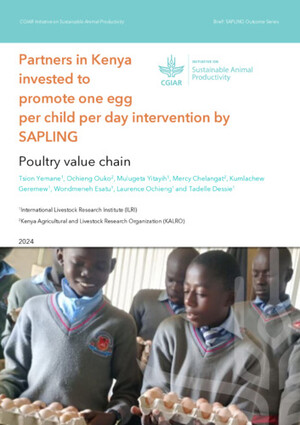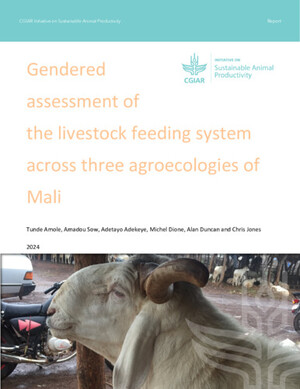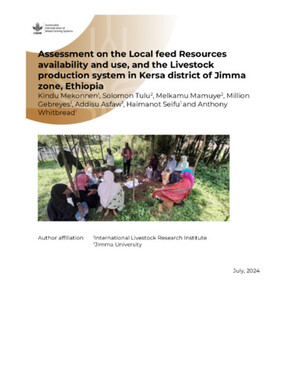
Groundnut (Arachis hypogaea) for food and fodder in crop-livestock systems: Forage and seed yields, chemical composition and rumen degradation of leaf and stem fractions of 38 cultivars
Abstract
Forage and seed yields of groundnut (Arachis hypogaea) are considered to be joint products by crop-livestock farmers, but forage yield and quality are not currently part of selection criteria in groundnut improvement programs in West Africa. Variations in forage and seed yields of 38 late-maturing groundnut cultivars were determined in 1995 and 1996 at Samaru, Zaria, northern Nigeria. Crude protein (CP), neutural detergent fibre (NDF), in sacco degradation of dry matter (DM), and nitrogen (N) were also estimated. Average yield of forage (4547 (+ or -) 1087.9 kg ha-1) and seed (1247 (+ or -) 266,6 jg ga-1), leaf: stem ratio (34 (+ or -) 9.4 percent), CP, NDF, and DM degradation of leaf and stem varied (P<0.05) among cultivars. Average (g kg-1 DM) leaf CP 158 vs. 111), soluble (262 vs. 181) and degradable (512 vs. 407) DM fractions, potential degradability (PD) (774 vs. 588) and effective degradability (ED) (542 vs. 429) were higher than those of the stem. Forage and seed yields were significantly correlated (r=0.53), but seed yield was poorly correlated with forage quality indices examined. It is therefore suggested that plant breeders could select genotypes with higher seed and forage yield, and better forage quality. There were significant but weak correlations between leaf CP (r=0.32) and stem NDF (r=-0.33) with leaf : stem ratio, and ED of leaf and stem with DM loss after 48 h of rumen incubation. Based on yield (forage and seed) and effective degradability of leaf and stem fractions, cultivars were identified with high (e.g., 42-85, M354-81, UGA-2, RMP-12), medium (ed.), UGA-5, 59-85A.
Citation
Animal Feed Science and Technology;77(1-2): 33-47









